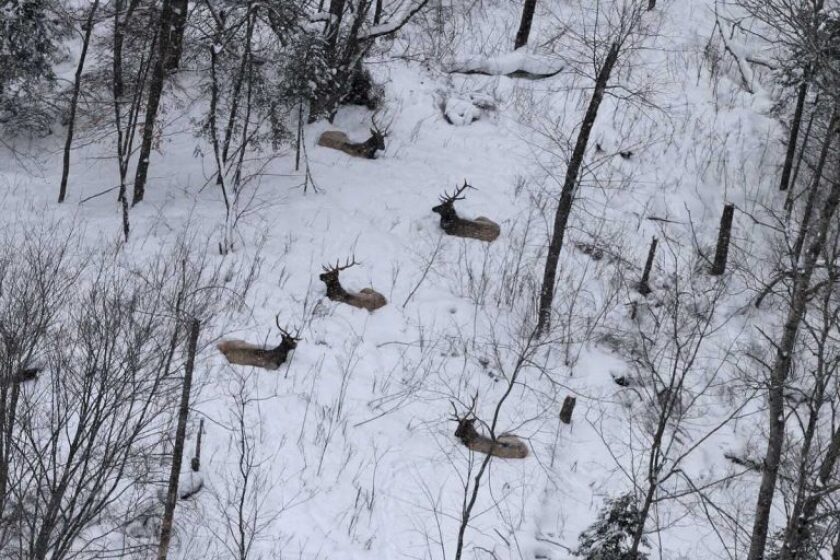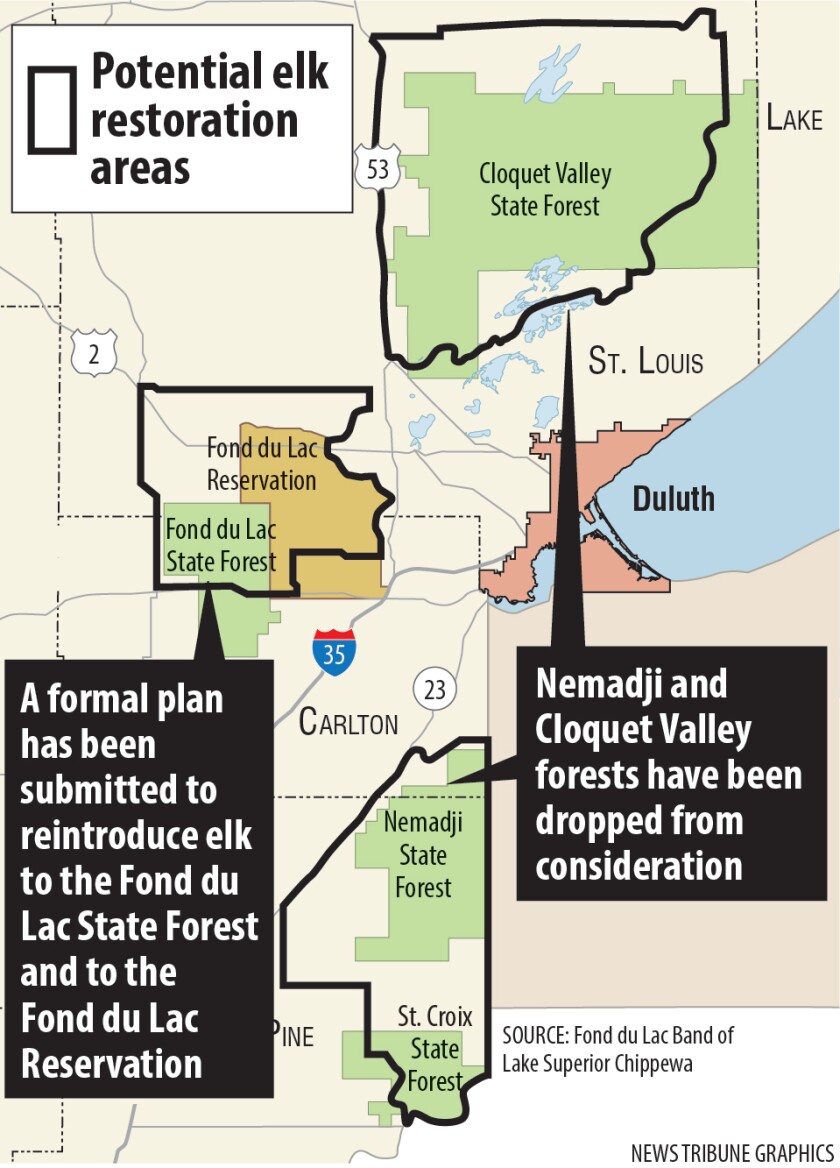ST. PAUL — A Minnesota House committee on Tuesday heard testimony on a bill that throws the state’s official support, along with $1 million in state money, behind the Fond du Lac Band’s effort to restore elk to eastern Minnesota.
The bill earmarks $1 million from the state’s general fund to go to the Fond du Lac Band of Lake Superior Chippewa, made available July 1, to plan for and relocate elk from northwestern Minnesota and release them in the Fond du Lac State Forest just west of Cloquet.
ADVERTISEMENT
Officials from the Minnesota Department of Natural Resources also said Tuesday that they support the bill, the strongest word yet on the elk reintroduction from the state agency.
The bill, HF 4482, is sponsored by Rep. Mike Sundin, DFL-Esko, and Rep. Jamie Becker-Finn, DFL-Roseville. The Environment and Natural Resources Finance and Policy Committee voted to lay the bill over for possible inclusion in a larger omnibus bill dealing with multiple wildlife issues, keeping the potential alive for the proposal to pass the full Legislature in coming weeks.
The bill essentially orders the DNR to support the elk reintroduction if key obstacles like chronic wasting disease can be hurdled.
“Consideration must be given to moving elk from existing herds in northwest Minnesota to the area of the Fond du Lac State Forest and the Fond du Lac Reservation in Carlton and southern St. Louis counties. The Fond du Lac Band of Lake Superior Chippewa's elk reintroduction efforts must undergo thorough planning with the Department of Natural Resources to develop necessary capture and handling protocols, including protocols related to cervid disease management, and to produce post-release state and Tribal elk co-management plans,” the bill states.

Fond du Lac officials sent the DNR their formal elk proposal last June but, until Tuesday, hadn’t heard any formal response from the state. Wildlife staff from both the band’s resource department and the DNR worked on the project before it was forwarded and met again recently to talk more about the proposal. including ways to make sure any elk moved are disease-free.
So far, the only way to confirm whether an animal has CWD is to take a tissue sample from a dead animal, although researchers, including at the University of Minnesota, say they are close to developing a CWD test that’s accurate on live animals.
While CWD is an important issue, “restoration of a native species and part of our culture is of equal importance,” said Kevin Dupuis, chairman of the Fond du Lac Band, in testimony Tuesday to the committee.
ADVERTISEMENT
Dupuis said the $1 million won’t cover the entire reintroduction cost but would go a long way toward moving the project forward and “provide a powerful indication of Minnesota’s support” for the plan.
Some lawmakers restated concerns over potential traffic issues with elk roaming onto busy roadways, such as nearby Interstate 35, as well as potential property damage on private property. But Pat Rivers, deputy director of the DNR’s Fish and Wildlife Division, testified that the agency supports the bill as the next step to “move the proposal forward.”
Fond du Lac Band wildlife managers have been working on the elk effort since 2014. Under their proposal, the band would start transplanting elk into northern Carlton County and southern St. Louis County in 2025, with animals taken from a wild herd in Kittson County in northwestern Minnesota where the herd, and the DNR, have come under fire from cash-crop farmers who say the big animals wander onto their fields and damage their crops. Supporters of the Fond du Lac Band plan note there is very little row-crop farming in the proposed relocation area.

The restoration plan calls for moving up to 150 elk into the area over three to five years, with a long-term goal of about 300 elk roaming parts of the Fond du Lac Reservation and much of the Fond du Lac State Forest, a combined area of about 296 square miles of mostly forested, mostly public lands about 30 miles west of Duluth. The band had previously looked at also bringing elk back to the nearby Cloquet River Valley State Forest and Nemadji State Forest, but has decided to drop those areas and focus on the Fond du Lac Reservation area for now.
Habitat studies conducted by University of Minnesota researchers in 2017 and 2018 showed plenty of wild food for elk to eat. And a major public opinion study in 2019 by University of Minnesota researchers found strong support for elk among the general public and among rural landowners across the region.
Known as "omashkooz" in Ojibwe, elk were important to the diet and culture of Native Americans across much of Minnesota — including eastern Minnesota — until the animals were hunted out by European settlers by the 1870s.
About 80 miles east of the proposed Fond du Lac elk reintroduction area, Wisconsin successfully reintroduced elk into southern Ashland County in the 1990s. There's now a self-sustaining wild population of about 300 elk around the Clam Lake area where limited hunting seasons have been held the past four years.
ADVERTISEMENT
John Myers reports on the outdoors, environment and natural resources for the Duluth News Tribune. He can be reached at jmyers@duluthnews.com .
This story was updated at 8:27 a.m. March 30 with the correct spelling of Rep. Mike Sundin's name. It was originally posted at 5:29 p.m. March 29.













